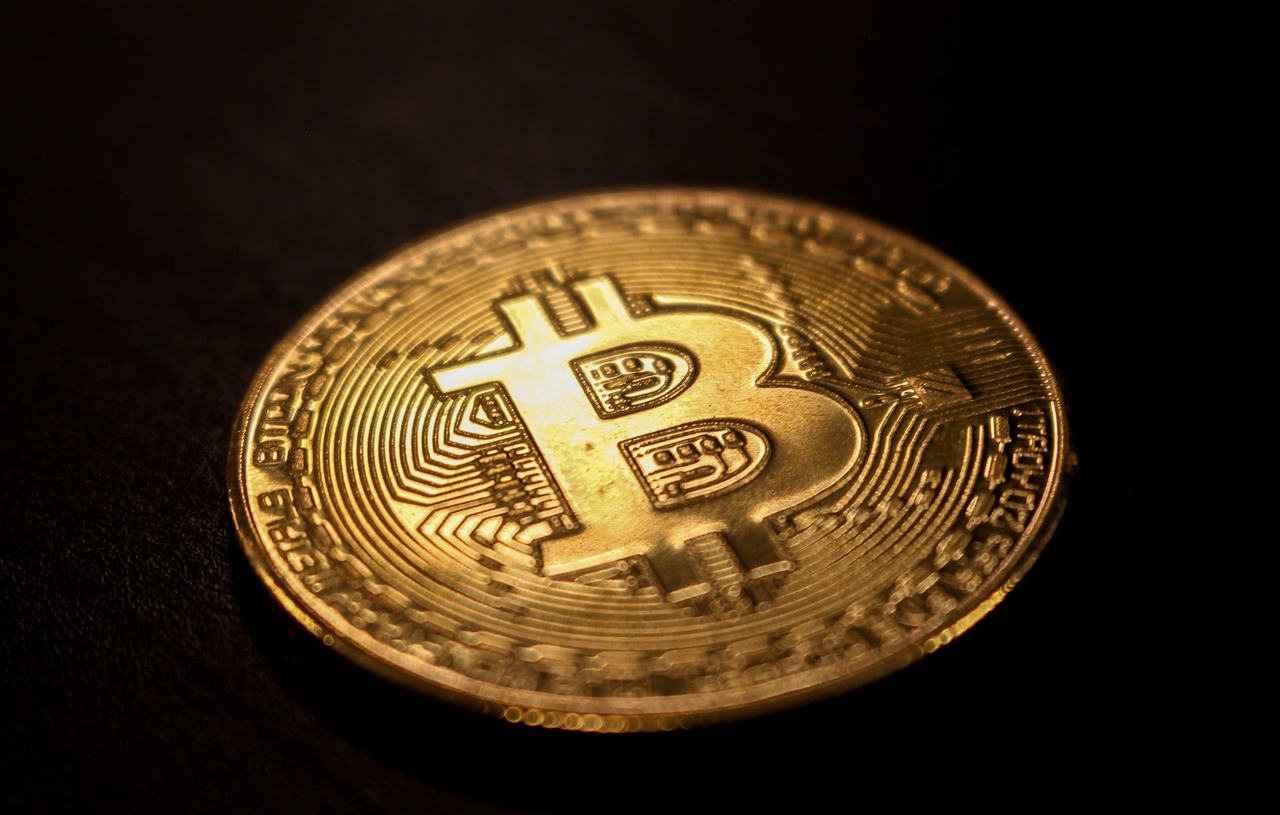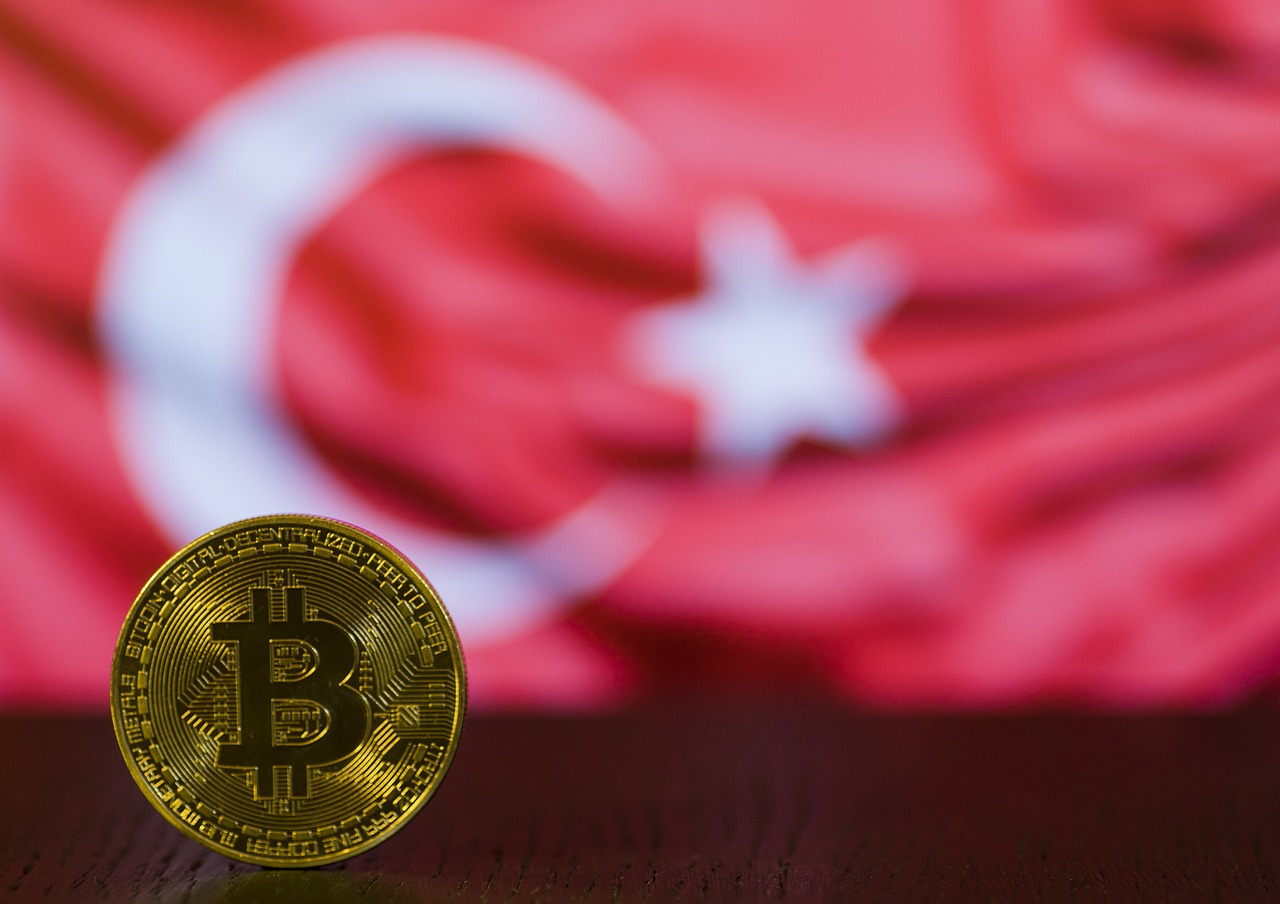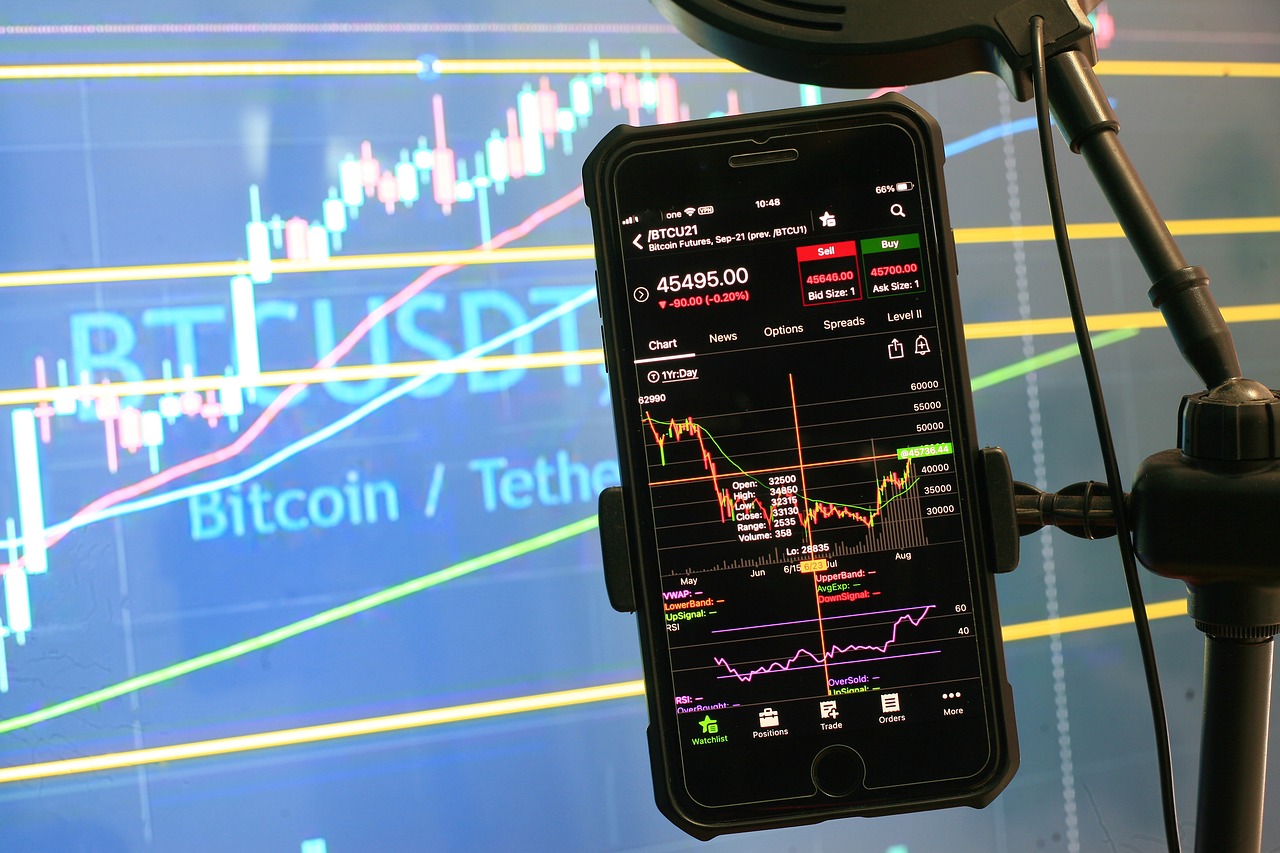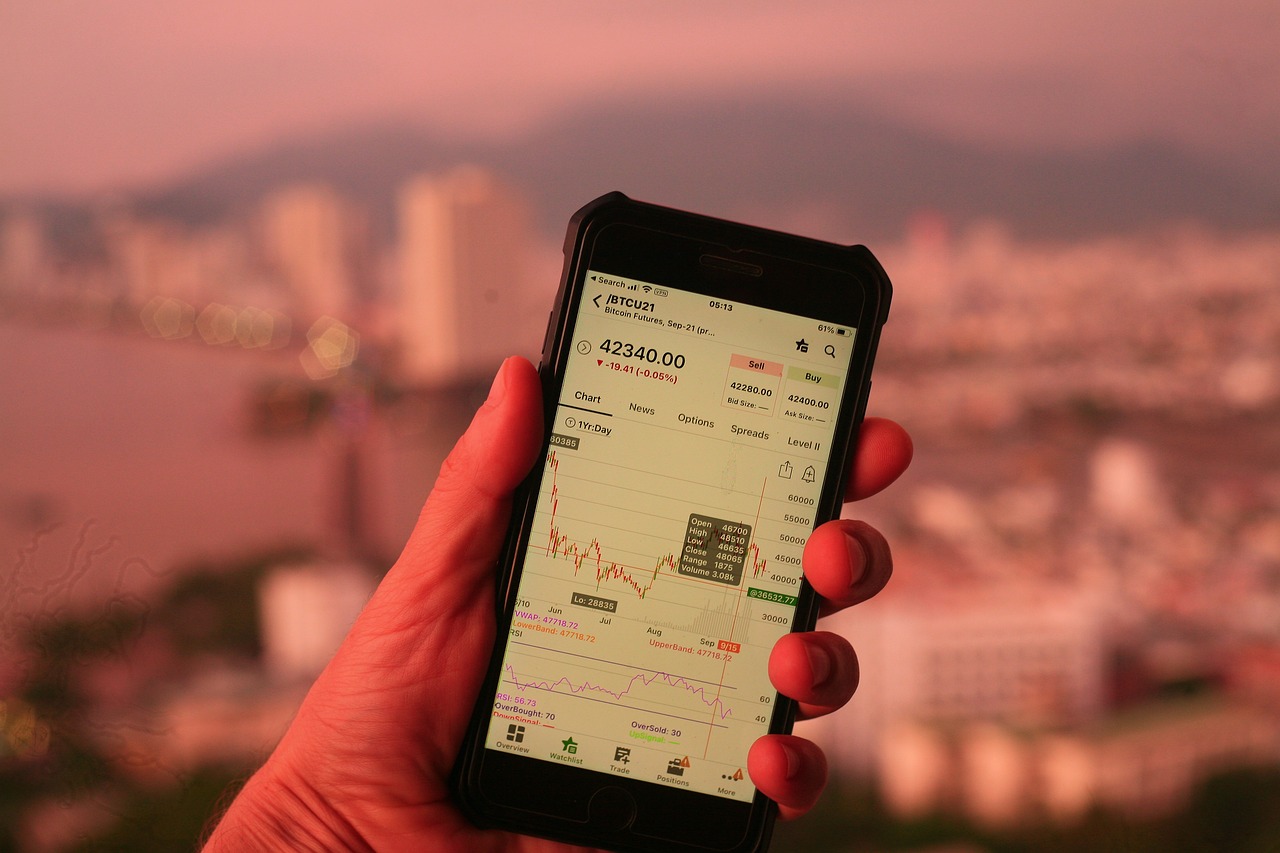How to Analyze Exchange Fees to Maximize Your Trading Profits
In the world of trading, every penny counts, and understanding exchange fees is paramount for maximizing your profits. If you're a trader looking to optimize your strategies, you might be wondering how to dissect those pesky fees that seem to eat away at your hard-earned gains. Well, you’ve come to the right place! This article will not only help you understand the different types of fees you may encounter but also provide actionable strategies to minimize these costs. By the end of this read, you'll be equipped with the knowledge to make informed decisions and enhance your trading outcomes.
Exchange fees can significantly impact your overall profitability. They are the costs incurred when trading assets on various platforms, and they come in various forms. Understanding these fees is crucial for any trader aiming to maximize their returns. Common types of fees include:
- Trading Fees: These fees are charged for executing trades and can be a percentage of the trade value or a flat fee.
- Withdrawal Fees: When you decide to take your funds off the exchange, you might incur withdrawal fees.
- Deposit Fees: Some exchanges charge fees for depositing funds into your trading account.
Each of these fees can chip away at your profits, so understanding their implications is the first step in optimizing your trading strategy.
Now that we've established the importance of understanding exchange fees, let’s dive deeper into the various types of fees charged by exchanges. Knowing the difference between these fees can help you tailor your trading strategies effectively. Here’s a closer look at the most common types:
One of the fundamental distinctions in trading fees is between maker and taker fees. Understanding these terms is essential for any trader looking to minimize costs. Maker fees are charged when you place an order that adds liquidity to the market, while taker fees are incurred when you place an order that matches an existing order, effectively removing liquidity from the market.
When you provide liquidity to the market by placing limit orders, you benefit from lower maker fees. This can lead to a more favorable trading experience. By strategically using limit orders, you can enhance your profit margins. Think of it like a restaurant: by reserving a table (providing liquidity), you often get a better deal than just walking in (removing liquidity) when the place is packed.
On the flip side, taker fees can add up quickly, especially for traders who frequently execute market orders. Understanding these costs is vital for effective trading. If you find yourself paying high taker fees, it might be time to reconsider your trading strategy. Remember, every time you hit that 'buy' button, you could be paying a premium that eats into your profits.
Another important aspect of exchange fees is the difference between flat fees and percentage-based fees. Flat fees are fixed amounts charged per transaction, while percentage fees are calculated based on the total value of the trade. Each has its advantages and disadvantages:
- Flat Fees: Easier to predict, but can be disadvantageous for larger trades.
- Percentage Fees: More favorable for small trades, but can become significant with larger volumes.
Choosing the right fee structure can depend on your trading volume and strategy, so it’s essential to analyze both options carefully.
Not all exchanges are created equal, especially when it comes to fees. Each platform has its unique fee structure, and comparing them is crucial for finding the most cost-effective option for your trading needs. By doing your due diligence, you can save a significant amount on fees.
Here’s a brief comparison of the fee structures of some popular exchanges:
| Exchange | Maker Fee | Taker Fee | Withdrawal Fee |
|---|---|---|---|
| Exchange A | 0.10% | 0.20% | $1.00 |
| Exchange B | 0.15% | 0.25% | $0.50 |
| Exchange C | 0.05% | 0.15% | $2.00 |
By analyzing the fee structures, you can determine which exchange aligns best with your trading strategy.
Fortunately, there are various tools available to help traders compare exchange fees. Websites and apps that aggregate fee information can save you time and effort, allowing you to focus on what really matters—trading! Make use of these resources to ensure you’re getting the best deal possible.
Now that you have a solid understanding of exchange fees, let’s explore some practical strategies to minimize these costs. Implementing these techniques can lead to significant savings and improved trading efficiency.
As mentioned earlier, employing limit orders is a great way to avoid high taker fees. By placing limit orders, you can control the price at which you buy or sell, potentially saving money on fees while providing liquidity to the market. It’s like setting a budget before shopping; you only spend what you’re willing to.
Different payment methods come with varying fees. Whether you're using credit cards, bank transfers, or other options, it’s essential to choose the most cost-effective method. Researching the fees associated with each payment option can lead to significant savings, especially if you're a frequent trader.
Q: How can I find the best exchange for my trading needs?
A: Compare the fee structures, trading options, liquidity, and user reviews of various exchanges to find the one that fits your trading style.
Q: Are there any exchanges with zero trading fees?
A: Some exchanges offer zero trading fees, but they may have higher withdrawal or deposit fees, so be sure to analyze the overall cost structure.
Q: Can I negotiate fees with exchanges?
A: While most exchanges have set fee structures, some may offer discounts for high-volume traders or during promotional periods.

Understanding Exchange Fees
When diving into the world of trading, one of the first things you’ll encounter is exchange fees. These fees can be the silent profit killers lurking in the shadows of your trading activities. They come in various forms and can significantly impact your overall profitability. Understanding these fees is crucial for any trader looking to maximize their returns. So, what exactly are these fees, and why should you care?
Exchange fees typically fall into three main categories: trading fees, withdrawal fees, and deposit fees. Each type serves a different purpose and can vary widely between exchanges. Trading fees are charged whenever you buy or sell an asset, withdrawal fees apply when you transfer your funds out of the exchange, and deposit fees are incurred when you add funds to your trading account. It’s essential to be aware of these fees because they can eat into your profits faster than you might think.
Let’s break it down a bit more. Imagine you’re a trader who executes multiple trades a day. Each time you trade, you're likely incurring a trading fee. If you’re not careful, these fees can accumulate and significantly reduce your net gains. For instance, if you make a profit of $100 but pay $10 in trading fees, your actual profit is only $90. This scenario highlights the importance of factoring in fees when calculating your potential earnings.
Moreover, different exchanges have different fee structures. Some may offer lower trading fees but charge higher withdrawal fees, while others might have a flat fee for trades. Understanding these nuances allows traders to choose exchanges that align with their trading habits and strategies. For example, a trader who executes a high volume of trades might benefit from an exchange with lower trading fees, while someone who trades infrequently might prefer a platform with minimal withdrawal fees.
To further illustrate the impact of exchange fees, consider the following table that compares the fee structures of three popular exchanges:
| Exchange | Trading Fee | Withdrawal Fee | Deposit Fee |
|---|---|---|---|
| Exchange A | 0.1% | $1.00 | Free |
| Exchange B | 0.2% | $0.50 | $5.00 |
| Exchange C | 0.15% | $2.00 | Free |
This table clearly shows that while Exchange A has the lowest trading fee, its withdrawal fee is higher than Exchange B. Depending on your trading style, this information can guide you in selecting the best exchange for your needs. Always remember, the goal is to minimize costs while maximizing profits.
In conclusion, understanding exchange fees is not just about knowing how much you'll be charged; it's about making informed decisions that can significantly enhance your trading profitability. By being aware of the various types of fees and how they apply to your trading strategy, you can better navigate the trading landscape and keep more of your hard-earned profits in your pocket.

Types of Exchange Fees
When diving into the world of cryptocurrency trading, understanding the is crucial for maximizing your profits. These fees can vary widely among different platforms and can significantly affect your bottom line. In essence, exchange fees are the costs that traders incur when buying or selling assets, and they can be categorized into several types. Let's break them down to give you a clearer picture of what to expect.
First up, we have trading fees, which are the most common and typically consist of two main categories: maker and taker fees. The maker fee is charged when you provide liquidity to the market by placing a limit order that isn't immediately matched. Conversely, the taker fee applies when you take liquidity away from the market by executing an order that matches an existing order. Understanding the difference between these two can help you strategize your trades more effectively.
Another important type of fee is the withdrawal fee. This is the cost associated with moving your funds off the exchange. Each exchange has its own structure for withdrawal fees, and they can vary depending on the asset you are withdrawing. For example, some exchanges may charge a flat fee for Bitcoin withdrawals, while others might have a percentage-based fee that fluctuates based on the current network conditions.
Then, we have deposit fees. While many exchanges have eliminated deposit fees to attract more users, some still impose charges when you fund your account using certain payment methods. It's essential to read the fine print before making a deposit, as these fees can add up quickly, especially if you're frequently trading.
Additionally, there are flat fees and percentage-based fees that traders should be aware of. Flat fees are straightforward; you pay a fixed amount regardless of the trade size. On the other hand, percentage-based fees scale with the size of your transaction. This means that for larger trades, percentage fees can become quite substantial, making it vital to calculate which fee structure is more advantageous for your trading volume.
To summarize, here’s a quick overview of the different types of exchange fees:
- Trading Fees
- Maker Fees
- Taker Fees
- Withdrawal Fees
- Deposit Fees
- Flat Fees
- Percentage-Based Fees
Understanding these fees is not just about knowing what you’ll pay; it’s about making informed decisions that can lead to greater profitability. By analyzing these costs in relation to your trading strategy, you can identify which fees are manageable and which could potentially eat into your profits. So, the next time you're considering a trade, take a moment to evaluate the fee structure of your chosen exchange. Your wallet will thank you!

Maker vs. Taker Fees
When diving into the world of trading, one of the most critical concepts to grasp is the distinction between maker and taker fees. These fees can significantly influence your overall trading costs and, ultimately, your profits. But what exactly do these terms mean, and why should you care? Let's break it down.
In simple terms, a maker is someone who provides liquidity to the market by placing limit orders that are not immediately filled. When you place a limit order, you're essentially saying, "I want to buy or sell at this price or better." If the market doesn't hit your price, your order sits in the order book, waiting to be matched with a taker's market order. This is why makers are often rewarded with lower fees—because they help create a more liquid market.
On the flip side, a taker is someone who removes liquidity from the market by placing market orders that get executed immediately at the current market price. Takers are often in a hurry to execute their trades, which is why they pay higher fees. Think of it as a restaurant where the takers are the diners who demand immediate service, while the makers are the chefs preparing meals for later. The faster you want your meal, the more you might have to pay.
It's essential to consider how these fees can impact your trading strategies. For instance, if you're a trader who frequently executes market orders, the taker fees can add up quickly, eating into your profits. In contrast, if you place limit orders and wait for the market to come to you, you might enjoy lower fees and potentially higher profits. This distinction is crucial not only for your current trades but also for your long-term trading strategy.
To illustrate the differences further, let's look at a comparison table that outlines the key aspects of maker and taker fees:
| Aspect | Maker Fees | Taker Fees |
|---|---|---|
| Definition | Provides liquidity by placing limit orders. | Removes liquidity by placing market orders. |
| Fee Structure | Typically lower fees. | Generally higher fees. |
| Execution Speed | May take longer to execute. | Executed immediately. |
| Market Impact | Helps stabilize the market. | Can cause price fluctuations. |
Understanding the nuances between maker and taker fees can empower you to make strategic decisions that align with your trading style. By minimizing taker fees through the use of limit orders, you can significantly enhance your profitability over time. So, the next time you're about to execute a trade, take a moment to consider whether you're acting as a maker or a taker—and how that choice will impact your bottom line.

Impacts of Maker Fees
When it comes to trading on exchanges, understanding maker fees is essential for anyone looking to maximize their profits. Maker fees are charged to traders who add liquidity to the market by placing limit orders that are not immediately matched with an existing order. This means that when you place a limit order, you’re essentially “making” the market by providing an opportunity for other traders to take your offer. The beauty of maker fees lies in their potential to lower your overall trading costs while creating a more favorable trading environment.
One of the most significant advantages of maker fees is that they are typically lower than taker fees. This is because exchanges incentivize liquidity providers, which ultimately leads to a healthier trading ecosystem. By paying less in fees, traders can keep more of their profits. For instance, if you’re a frequent trader, the cumulative effect of lower maker fees can lead to substantial savings over time. Imagine your trading profits growing not just from successful trades but also from the money you save on fees!
Moreover, employing a strategy that emphasizes maker orders allows traders to have greater control over their trades. By setting limit orders at desired price points, traders can wait for the market to come to them, rather than chasing prices with market orders. This approach not only helps in avoiding high taker fees but also positions traders to capitalize on better pricing opportunities. For example, if you anticipate a price movement, placing a limit order at a strategic point can lead to a more profitable outcome.
Another noteworthy impact of maker fees is their role in fostering market stability. When more traders participate as makers, it contributes to a more liquid market, which can reduce volatility. A stable market environment is beneficial for all traders, as it allows for more predictable price movements and less slippage. Think of it like a well-oiled machine: the more parts working smoothly together, the better the overall performance. This stability can lead to a more favorable trading experience, where traders can execute their strategies with confidence.
In conclusion, understanding the impacts of maker fees is crucial for traders aiming to optimize their trading strategies. By leveraging the advantages of maker fees, traders can not only reduce their costs but also enhance their overall trading experience. So, the next time you're planning your trades, consider the benefits of becoming a maker and how it can positively influence your profitability.
- What are maker fees? Maker fees are charges applied to traders who place limit orders that provide liquidity to the market.
- How do maker fees differ from taker fees? Maker fees are usually lower than taker fees, as they incentivize traders to add liquidity rather than take it away.
- Can using maker orders really save me money? Yes! By using limit orders and minimizing taker fees, you can significantly reduce your overall trading costs.
- Do all exchanges have maker fees? Most exchanges have a fee structure that includes maker fees, but the rates may vary from one platform to another.

Impacts of Taker Fees
The world of trading is exhilarating, but it comes with its own set of challenges, and one of the most significant hurdles traders face is the impact of taker fees. When you place a market order, you are essentially a taker, which means you’re accepting the current market price. While this might seem convenient, it comes at a cost. Taker fees are typically higher than maker fees, and understanding how they affect your overall trading strategy is crucial for maximizing profits.
One of the most immediate impacts of taker fees is the reduction in profit margins. Each time you execute a market order, a percentage of your trade goes directly to the exchange as a fee. For example, if you’re trading a cryptocurrency and the taker fee is 0.2%, that means for every $1,000 you trade, you’re effectively losing $2 right off the bat. Over time, these fees can add up significantly, especially for active traders who make numerous transactions daily.
Moreover, the frequency of trading can exacerbate the impact of taker fees. If you’re a day trader making multiple trades within a single day, those fees can accumulate quickly, eating away at your profits. It's essential to calculate how much you are spending on fees relative to your gains. For instance, if you make $100 in profit but pay $10 in taker fees, your net gain is only $90, which might not be worth the effort.
Another aspect to consider is the psychological effect of taker fees. When traders know that executing market orders incurs a higher cost, they may hesitate to enter or exit trades, fearing that the fees will erode their profits. This hesitation can lead to missed opportunities, which can be even more detrimental in a volatile market where prices can change rapidly.
To illustrate the impact of taker fees further, consider the following
| Trade Amount | Taker Fee (0.2%) | Net Profit After Fees |
|---|---|---|
| $1,000 | $2 | $998 |
| $5,000 | $10 | $4,990 |
| $10,000 | $20 | $9,980 |
This table clearly shows how even small percentages can lead to significant losses when trading larger amounts. As you can see, the more you trade, the more fees you incur, which can substantially impact your overall profitability. Therefore, it is vital for traders to be aware of these fees and plan their trading strategies accordingly.
In conclusion, taker fees play a pivotal role in the trading landscape. By understanding their implications, traders can make more informed decisions. Whether it’s choosing to place limit orders instead of market orders or being selective about when to execute trades, being aware of taker fees can help you keep more of your hard-earned profits. Remember, in the world of trading, every penny counts!

Flat Fees vs. Percentage Fees
When it comes to trading on exchanges, understanding the difference between flat fees and percentage fees is essential for maximizing your profits. Flat fees are a fixed amount charged for each transaction, regardless of the trade size. For example, if an exchange charges a flat fee of $2 per trade, that’s what you’ll pay, no matter if you’re trading $100 or $10,000. This structure can be beneficial for traders making smaller trades, as their costs remain predictable and manageable.
On the other hand, percentage fees are calculated based on the total value of the trade. For instance, if an exchange charges a 0.2% fee, and you execute a trade worth $1,000, you would incur a fee of $2. However, if you were to trade $5,000, the fee would increase to $10. This means that as your trading volume increases, the costs can escalate quickly, potentially eating into your profits.
To help illustrate the differences, consider the following table:
| Trade Value | Flat Fee ($2) | Percentage Fee (0.2%) |
|---|---|---|
| $100 | $2 | $0.20 |
| $1,000 | $2 | $2.00 |
| $5,000 | $2 | $10.00 |
| $10,000 | $2 | $20.00 |
This table clearly shows that for smaller trades, a flat fee can be more advantageous, while for larger trades, percentage fees might be more economical. However, the choice between flat and percentage fees often depends on your trading style and volume. If you're a frequent trader dealing in small amounts, flat fees can help keep your costs low. Conversely, if you trade in larger volumes less frequently, percentage fees might be the better option.
Ultimately, it's crucial to analyze your trading habits and calculate how different fee structures will impact your overall profitability. By doing so, you can make informed decisions that align with your trading strategy and financial goals.

Comparing Different Exchanges
When it comes to trading cryptocurrencies, not all exchanges are created equal, especially regarding fees. It can be a daunting task to sift through the myriad of options available, each boasting different fee structures, services, and trading experiences. But fear not! Understanding how to compare different exchanges can be the key to unlocking better trading profits. By evaluating fees, services, and user experiences, you can find the perfect platform that aligns with your trading strategy and budget.
First and foremost, it’s essential to look beyond just the trading fees. While they are a significant factor, other elements like withdrawal fees, deposit fees, and even inactivity fees can add up quickly. For example, a platform might have low trading fees but hefty withdrawal charges. Therefore, a comprehensive analysis is necessary. Here’s a quick breakdown of what to consider:
- Trading Fees: These are the fees charged when you buy or sell cryptocurrencies. Look for exchanges with competitive rates, especially if you trade frequently.
- Withdrawal Fees: Understand how much it will cost to transfer your funds out of the exchange. Some platforms charge a flat fee, while others may take a percentage.
- Deposit Fees: Check if there are fees associated with depositing funds. Some exchanges offer free deposits for certain payment methods.
- Inactivity Fees: If you’re a casual trader, be wary of exchanges that charge fees for accounts that remain inactive for a certain period.
To make an informed decision, it’s also wise to examine the fee structures of popular exchanges. Below is a simplified comparison of three well-known platforms:
| Exchange | Trading Fee | Withdrawal Fee | Deposit Fee |
|---|---|---|---|
| Exchange A | 0.1% | $2.00 | Free |
| Exchange B | 0.2% | $3.00 | 1% on credit card deposits |
| Exchange C | 0.15% | $1.50 | Free for bank transfers |
As you can see, each exchange has its unique fee structure. Exchange A might be ideal for high-volume traders due to its low trading fee and free deposits. In contrast, Exchange B could be better suited for those who make fewer trades but need to use a credit card for deposits. This type of analysis empowers you to choose the exchange that best fits your trading habits and financial goals.
Moreover, don't forget to factor in user experience and security features. A low fee structure means little if the platform is difficult to navigate or lacks robust security measures. Read user reviews, check for regulatory compliance, and explore the platform’s security protocols before making your final decision.
In conclusion, comparing different exchanges involves more than just looking at fees. It requires a holistic view of all associated costs, user experiences, and the specific needs of your trading strategy. By taking the time to analyze these factors, you can make informed decisions that ultimately lead to maximizing your profits while minimizing unnecessary expenses.
1. What are the most important fees to consider when choosing an exchange?
The most important fees include trading fees, withdrawal fees, deposit fees, and inactivity fees. Each can significantly impact your overall trading costs.
2. How can I find the best exchange for my trading needs?
Compare the fee structures, services offered, user reviews, and security features of different exchanges. This comprehensive analysis will help you find the best fit.
3. Are there exchanges with no fees?
While some exchanges advertise zero trading fees, they often have other costs, such as withdrawal fees or spreads. Always read the fine print.
4. Can I change exchanges after I start trading?
Yes, you can switch exchanges at any time, but be mindful of withdrawal fees and the process involved in transferring your assets.

Fee Structures of Popular Exchanges
When it comes to trading cryptocurrencies, understanding the fee structures of popular exchanges is essential for maximizing your profits. Each exchange has its own unique fee schedule, which can significantly influence your trading strategy. For instance, some exchanges may offer lower trading fees but charge higher withdrawal fees, while others might have a flat fee structure that appeals to high-volume traders. It's vital to dissect these fee structures to determine which exchange aligns best with your trading habits.
To give you a clearer picture, let's take a look at a few well-known exchanges and their fee structures:
| Exchange | Trading Fee | Withdrawal Fee | Deposit Fee |
|---|---|---|---|
| Exchange A | 0.1% (Maker) / 0.2% (Taker) | $1.00 | Free (Bank Transfer) |
| Exchange B | 0.15% (Flat) | 0.0005 BTC | Free (Crypto) |
| Exchange C | 0.25% (Taker) / 0.15% (Maker) | $2.00 | 1% (Credit Card) |
As you can see from the table, Exchange A has a tiered fee structure that rewards liquidity providers (makers) with lower fees. In contrast, Exchange B opts for a flat fee, which can be advantageous for traders making numerous small trades. On the other hand, Exchange C's withdrawal fees are higher, which could cut into your profits if you frequently withdraw funds.
Moreover, it's not just about the fees themselves; the overall trading experience also matters. Some exchanges provide advanced trading tools, which can justify higher fees for serious traders. Therefore, when evaluating exchanges, consider both the fee structures and the features they offer. The goal is to find a balance that minimizes costs while maximizing trading efficiency.
In addition to comparing fees, you should also keep an eye on promotional offers. Many exchanges periodically run campaigns that can temporarily reduce fees or offer trading credits, which can be a great way to save money while trading. Always check the fine print; sometimes, the best deals come with conditions that you’ll need to meet.
In conclusion, understanding the fee structures of popular exchanges is crucial for any trader looking to optimize their profits. By analyzing the fees associated with trading, withdrawal, and deposits, you can make informed decisions that align with your trading style. Remember, the right exchange can make a significant difference in your overall trading success!
- What are exchange fees? Exchange fees are charges imposed by cryptocurrency exchanges for facilitating trades, withdrawals, and deposits.
- How can I find the best exchange for trading? Compare the fee structures, features, and user experiences of different exchanges to find one that suits your trading needs.
- Are there any exchanges with zero fees? While some exchanges offer zero trading fees, they may compensate with higher withdrawal fees or other costs, so it’s essential to read the fine print.
- Can I negotiate fees with exchanges? Generally, exchanges have set fee structures, but high-volume traders may be able to negotiate better rates.

Tools for Fee Comparison
In the fast-paced world of trading, understanding and comparing exchange fees can feel like navigating a maze. Fortunately, there are several tools available that can help you cut through the confusion and make informed choices. These tools are designed to provide you with a clear overview of the fees associated with various exchanges, allowing you to maximize your profits by minimizing costs. So, how do you find the best tools for fee comparison?
One of the most popular options is fee comparison websites. These platforms aggregate information from multiple exchanges, presenting it in a user-friendly format. With just a few clicks, you can see a side-by-side comparison of trading fees, withdrawal fees, and even deposit fees across different platforms. This not only saves you time but also ensures you have access to the most up-to-date information available.
Another useful resource is community-driven platforms, where traders share their experiences and insights regarding different exchanges. Websites like Reddit or specialized trading forums can be invaluable for gathering firsthand accounts of fee structures and any hidden costs that may not be immediately apparent. Engaging with the trading community can provide you with tips and tricks that you won’t find in official documentation.
Furthermore, many exchanges offer their own calculators or fee estimators. These tools allow you to input your trading volume and desired trading pairs to get an estimate of the fees you would incur. Utilizing these calculators can help you make more informed decisions about where to trade, especially if you plan on executing high-volume trades.
To give you a clearer picture, here’s a table comparing some of the popular fee comparison tools available:
| Tool Name | Type | Features |
|---|---|---|
| CoinMarketCap | Fee Comparison Website | Comprehensive exchange data, real-time updates, and user-friendly interface. |
| CryptoCompare | Fee Comparison Website | Side-by-side fee comparison, historical data, and community reviews. |
| Binance Fee Calculator | Exchange Tool | Estimate trading fees based on your activity and trading pairs. |
| Reddit Trading Communities | Community Forum | User-generated content, discussions about fees, and personal experiences. |
By leveraging these tools, you can gain a better understanding of the fee landscape in the trading world. Remember, the goal is to keep your costs low while ensuring you have access to the best trading opportunities. So, take advantage of these resources, and don’t hesitate to reach out to fellow traders for insights!
- What are exchange fees? Exchange fees are charges imposed by trading platforms for executing trades, withdrawing funds, or depositing money.
- How can I find the best exchange with the lowest fees? Use fee comparison tools and websites to analyze and compare the fee structures of different exchanges.
- Are there hidden fees I should be aware of? Yes, some exchanges may have hidden fees not immediately apparent, so it's essential to read the fine print and consult community reviews.
- Can I negotiate exchange fees? While most exchanges have set fee structures, some may offer lower fees for high-volume traders, so it's worth asking.

Strategies to Minimize Fees
When it comes to trading, every cent counts, and minimizing exchange fees can significantly enhance your profit margins. But how do you go about it? Here are some effective strategies that can help you reduce those pesky fees while still making the most of your trading activities. First off, consider the type of orders you place. Utilizing limit orders instead of market orders can save you a substantial amount in taker fees. When you place a limit order, you’re essentially saying, “I want to buy or sell at this price or better.” This means you’re providing liquidity to the market, which often results in lower fees. Plus, it gives you more control over your trades, allowing you to wait for the right price.
Another smart move is to carefully choose your payment methods. Different payment options come with varying fees. For instance, credit card transactions might incur higher fees compared to bank transfers. So, if you’re serious about minimizing costs, it’s wise to research and select the most cost-effective payment method that suits your trading habits. Additionally, some exchanges offer discounts for specific payment methods or for using their native tokens, which can lead to further savings.
It’s also beneficial to keep an eye on your trading volume. Many exchanges have tiered fee structures where the more you trade, the lower your fees become. This means that if you’re a frequent trader, you might qualify for lower fees simply by increasing your trading volume. It’s like a loyalty program, but for trading! So, if you find yourself trading regularly, it might be worth considering consolidating your trades to reach those higher tiers.
Moreover, take advantage of promotions and fee discounts offered by exchanges. Many platforms run special promotions that can help you save on fees. For example, some exchanges may waive fees for the first few trades or offer reduced fees during specific times. Staying updated on these promotions can give you an edge and help you save money in the long run.
Lastly, don’t forget to continuously analyze your trading activity. Regularly reviewing your trades and the associated fees can provide valuable insights into your trading habits. You may discover patterns in your trading that lead to unnecessary fees. For instance, if you notice that you frequently place market orders, it might be time to switch to limit orders. Keeping a trading journal or using trading software with analytical tools can help you track and optimize your strategies effectively.
- What are the most common types of exchange fees?
Exchange fees typically include trading fees, withdrawal fees, and deposit fees. Understanding these can help you make better trading decisions. - How can I find the best exchange with the lowest fees?
Research different exchanges, compare their fee structures, and look for reviews from other traders to find the most cost-effective option. - Do all exchanges have the same fee structures?
No, fee structures can vary greatly between exchanges. It’s essential to analyze and compare them based on your trading volume and strategy. - Can I negotiate exchange fees?
While most exchanges have set fee structures, some may offer discounts for high-volume traders or promotional periods. It’s worth inquiring about potential discounts.

Using Limit Orders
When it comes to trading, one of the most effective strategies to minimize fees is by using limit orders. But what exactly is a limit order? Simply put, a limit order allows you to specify the price at which you want to buy or sell an asset, as opposed to a market order, which executes immediately at the current market price. This distinction can be crucial for traders looking to save on costs. By placing a limit order, you can avoid the higher taker fees that often accompany market orders.
Imagine you’re at a bustling marketplace. If you rush to buy an item without checking the prices, you might end up paying more than you should. Similarly, using a market order can lead to unexpected costs due to slippage. Instead, by using a limit order, you set your price, ensuring that you only buy or sell when the market meets your conditions. This not only helps in securing a better price but also reduces the likelihood of incurring high fees associated with immediate trades.
Limit orders can also be particularly advantageous in volatile markets. When prices are fluctuating rapidly, placing a limit order can provide you with more control over your trades. For instance, if you believe that a particular cryptocurrency will drop to a certain price before it rebounds, you can set a limit order at that target price. This strategy not only positions you for potential profit but also allows you to avoid the unnecessary costs that come with executing market orders during such fluctuations.
However, it’s important to note that while limit orders can save you money, they come with their own set of risks. If the market doesn’t reach your specified price, your order might not execute at all. This means you could miss out on potential profits. Therefore, it’s essential to find a balance between setting realistic limit prices and ensuring that your trades are executed in a timely manner.
To illustrate the potential savings, consider the following hypothetical scenario:
| Order Type | Price | Fees | Final Cost |
|---|---|---|---|
| Market Order | $100 | $2 (2%) | $102 |
| Limit Order | $98 | $1.50 (1.5%) | $99.50 |
In this table, you can see that by using a limit order, the trader saves not only on the price of the asset but also on the associated fees. This example underscores the importance of understanding how limit orders work and how they can be leveraged to enhance your trading strategy.
In conclusion, using limit orders is a powerful tool in a trader's arsenal. By taking control of the price at which you execute trades, you can significantly reduce fees and increase your overall profitability. As you continue to navigate the trading landscape, consider incorporating limit orders into your strategy to maximize your gains while keeping costs low.
- What is the difference between a market order and a limit order? A market order executes immediately at the current market price, while a limit order allows you to set a specific price at which you want to buy or sell an asset.
- Are limit orders always guaranteed to execute? No, limit orders are not guaranteed to execute. If the market does not reach your specified price, your order will remain unfilled.
- Can I use limit orders on all exchanges? Most exchanges support limit orders, but it’s always best to check the specific features of the platform you are using.
- How do I set a limit order? You can set a limit order by selecting the asset you want to trade, choosing 'Limit Order' as your order type, and entering the desired price and quantity.

Choosing the Right Payment Method
When it comes to trading on exchanges, the choice of payment method can significantly affect your overall costs. Imagine you’re at a buffet, and you have to choose a dish that not only satisfies your appetite but also fits your budget. Similarly, selecting the right payment method is all about balancing convenience and cost-effectiveness. Different payment options come with varying fees, and understanding these differences can lead to substantial savings over time.
For instance, credit and debit cards often provide immediate access to funds, allowing you to jump on trading opportunities as they arise. However, they can also come with higher fees compared to other methods. On the other hand, bank transfers might take longer but typically incur lower fees. It’s like choosing between a fast-food meal or a home-cooked dinner — one is quick and convenient, while the other is more economical and potentially healthier in the long run.
To help you navigate this decision, here’s a quick rundown of popular payment methods and their associated fees:
| Payment Method | Typical Fees | Processing Time |
|---|---|---|
| Credit/Debit Card | 2-5% per transaction | Instant |
| Bank Transfer | 0-1% per transaction | 1-3 business days |
| Cryptocurrency | Varies (usually low) | Instant to a few minutes |
| e-Wallets (e.g., PayPal) | 2-4% per transaction | Instant |
In this table, you can see that while credit and debit cards offer speed, they come with higher fees. On the contrary, bank transfers may take longer but are often cheaper. Cryptocurrency transactions can be a game-changer, especially if you’re trading frequently, as they generally have lower fees and faster processing times.
Moreover, it’s essential to consider the exchange you’re using, as some platforms may charge additional fees for specific payment methods. Always read the fine print! Before making a decision, ask yourself: What’s more important to you — speed or cost? By weighing these factors, you can choose a payment method that aligns with your trading style and financial goals.
In conclusion, selecting the right payment method is akin to picking the best tool for a job. A well-chosen method can save you money and enhance your trading experience, while a poor choice can eat into your profits. So, take your time, do your research, and make an informed decision that will benefit your trading strategy in the long run.
- What is the cheapest payment method for trading? Generally, bank transfers tend to have the lowest fees, but this can vary by exchange.
- Are there any hidden fees associated with payment methods? Yes, always check the terms and conditions of your chosen payment method and the exchange to avoid surprises.
- Can I change my payment method later? Most exchanges allow you to update your payment method, but be sure to check their policies.
- Is using cryptocurrency for trading safer? While cryptocurrency transactions can be secure, they are also subject to market volatility, so weigh the risks carefully.
Frequently Asked Questions
- What are exchange fees?
Exchange fees are costs that traders incur when buying or selling assets on a trading platform. These fees can include trading fees, withdrawal fees, and deposit fees, which can all impact your overall profitability.
- What is the difference between maker and taker fees?
Maker fees are charged to traders who provide liquidity to the market by placing limit orders. Taker fees, on the other hand, apply to traders who take liquidity by executing market orders. Understanding these fees is crucial for optimizing your trading strategy.
- How do flat fees compare to percentage-based fees?
Flat fees are fixed costs per trade regardless of the trade size, while percentage-based fees vary based on the transaction amount. Depending on your trading volume, one may be more advantageous than the other, so it's essential to analyze which fee structure suits your trading style best.
- How can I compare exchange fees across different platforms?
You can compare exchange fees by researching the fee structures of various exchanges, utilizing online comparison tools, and reading user reviews. This way, you can identify which platforms offer the best rates and services for your trading needs.
- What strategies can I use to minimize exchange fees?
To minimize exchange fees, consider using limit orders instead of market orders, as they typically incur lower taker fees. Additionally, choosing the right payment method can help reduce costs associated with deposits and withdrawals.
- Are there any tools available for analyzing exchange fees?
Yes! There are several online tools and resources designed to help traders analyze and compare exchange fees. These tools can provide insights into fee structures and help you make informed decisions based on your trading habits.



















